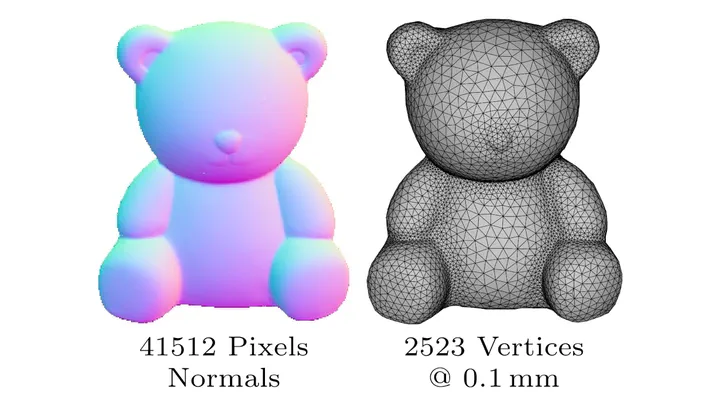An Adaptive Screen-Space Meshing Approach for Normal Integration

Motivation
Increasing the resolution of the normal map improves the accuracy of fine structures but increases computational complexity. In smooth, featureless regions, this added complexity yields little additional information.
We introduce an adaptive screen-space meshing approach to reduce complexity before integration and give a full derivation of the normal integration on general triangle meshes.
By focusing on fine details and removing redundant information, we can avoid the quadratic growth of variables with increasing geometric resolution in pixel-based methods.
Overview
To create a feature-adaptive mesh before the actual surface integration, we must reliably predict detailed surface areas and adjust the density of the triangle mesh accordingly. We extract the surface curvature from the normal maps and use it to calculate an optimal edge length to keep the expected deviation between the triangle mesh and the underlying smooth surface below a user defined threshold.
Results
Citation
@InProceedings{adaptive_screen_meshing,
author="Heep, Moritz and Zell, Eduard",
title="An Adaptive Screen-Space Meshing Approach for Normal Integration",
booktitle="Computer Vision -- ECCV 2024",
year="2025",
publisher="Springer Nature Switzerland",
pages="445--461",
isbn="978-3-031-72920-1",
doi="10.1007/978-3-031-72920-1_25"
}